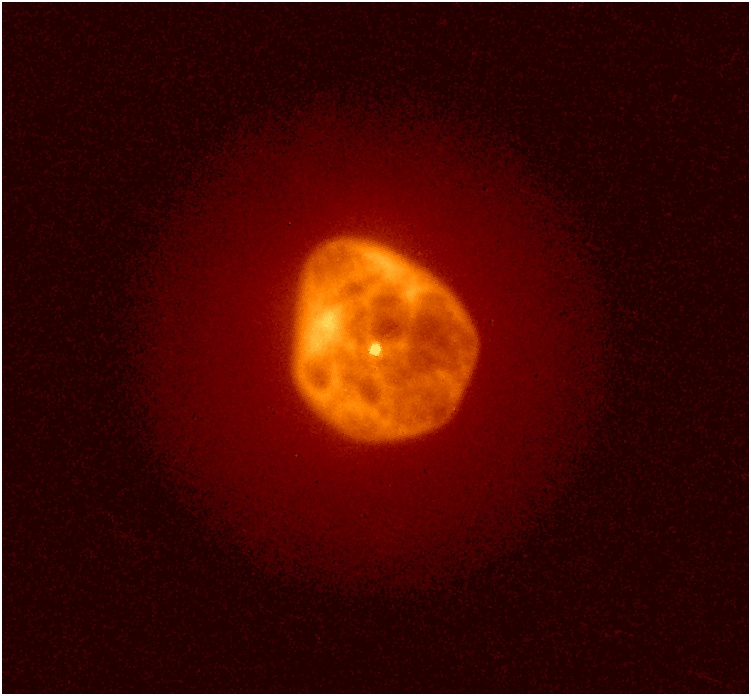Formation of a Planetary NebulaPlanetary nebulae are the descendants of low- and intermediate-mass stars, i.e., stars with initial masses in the range between 0.8 and 8 solar masses. At the end of their evolution, these stars reach the tip of the Asymptotic Giant Branch (AGB) phase and then eject most of their envelopes through a dense and slow stellar wind. The exposed stellar core subsequently photoionizes the stellar envelope and forms a planetary nebula. In a short period of time period, about 30,000 yrs, the planetary nebula will expand and dissipate into the interstellar medium.The shaping of planetary nebulae is a complex process affected by the action of fast stellar wind and collimated outflows. The same mechanisms are responsible of the production of hot gas in planetary nebulae: Shocked Fast Stellar WindIn the standard interacting-stellar-winds model of planetary nebula formation, the fast stellar wind, escaping from the central star at velocities 1,000-4,000 km s−1, sweeps up the slow AGB wind to form the sharp nebular rims and shells typically seen in planetary nebulae.
In this interaction, the fast stellar wind is shocked up to X-ray-emitting temperatures. The shocked fast stellar wind, however, is so tenuous that it cannot produce appreciable X-ray emission. At the interface between the shocked fast stellar wind and the dense nebular shell, heat conduction and mass evaporation increase the density and reduce the temperature of the hot gas that reaches optimal conditions for X-ray emission. Fast Collimated OutflowsFast collimated outflows that occur near the end of the AGB phase impinge on the AGB wind, producing bow-shock structures. When the shock velocity is >300 km s−1, extended cavities filled with hot X-ray-emitting gas can be formed. |
